
Medical cannabis – CBD for Headaches has received increasing attention in recent years, but the drug’s relationship to pain dates back thousands of years. The loosening of cannabis laws finally made research a bit easier. Hence, scientists wasted no time exploring marijuana’s potential for treating several conditions — Migraine being only one of them.
Still, our knowledge is far from complete. If you’re looking to try medical marijuana for Migraine, there are a few things you need to know. I recommend a THC/CBD Combination or experience the “Entourage” effect. Again we are just in the Beginnings of understanding how this Amazing Plant and it’s Cannabinoids work. Thus using all that is available is my suggestion!
Research Marijuana Laws and Restrictions
Before you consider using marijuana, you need to know the laws in your state or Country. Marijuana is still federally illegal, but over half of the U.S. allows it for medical use, and some have legalized it for recreational use. Here in Thailand Yes! You may obtain a Prescription and Legally Use medical Marijuana.
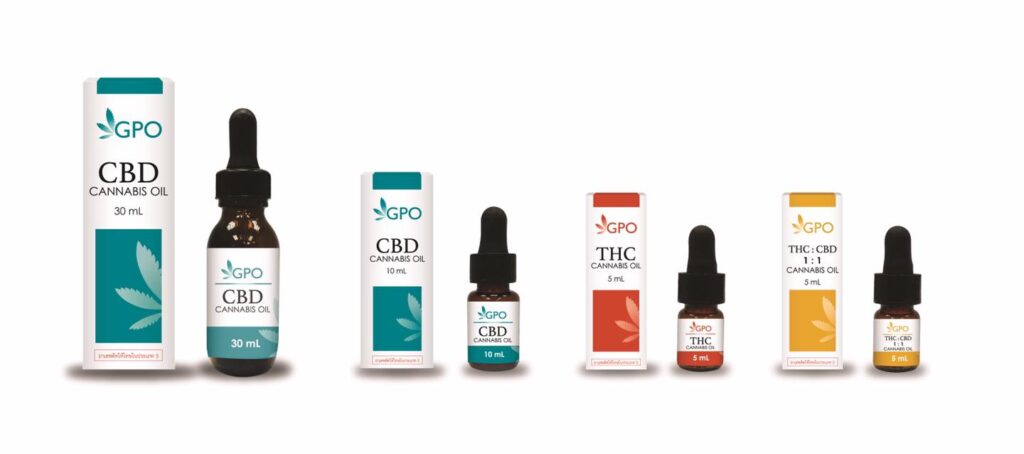
IMAGE OF THAI OIL/EXTRACT
If you are looking for a medical marijuana prescription, there are now MMJ Clinics all over Thailand. Email me I can assist you in Locating one near you. In The U.S.A only three states list Migraine individually as a qualifying condition:
- California
- New Jersey
- Missouri
However, several other states mention “chronic pain,” which is a broad term that could include Migraine. If you do not live in the above locations, you might still qualify in the following ones:
- Arizona
- Iowa
- Michigan
- Minnesota
- Montana
- New Mexico
- New York
- Rhode Island
- West Virginia
- Another thing to keep in mind is that you are not allowed to cross state lines with marijuana products, as per federal law. The rule applies even if traveling from one legal cannabis state to another.
- If you are coming to the Kindom of Thailand you must Bring your Doctor Written Prescription and MMJ License with you, Declare you have “Medicine” with you at Customs. As long as you have a Legitimate Prescription you can possess. I highly recommend contacting the nearest Thai Embassy prior to your travel and entry here to check on all you need.
Know the Best Marijuana Consumption Methods for Migraine
You need to consider consumption methods when using marijuana for Migraine. There are a lot of excellent options, but they boil down to inhalation and ingestion.
Each offers advantages and disadvantages.
More than 100 Cannabinoids have been Identified so far in the cannabis plant. Certain Hemp Strains Contain large quantities of CBD which is Considered the best.
Smoking CBD for Migraine: Pros
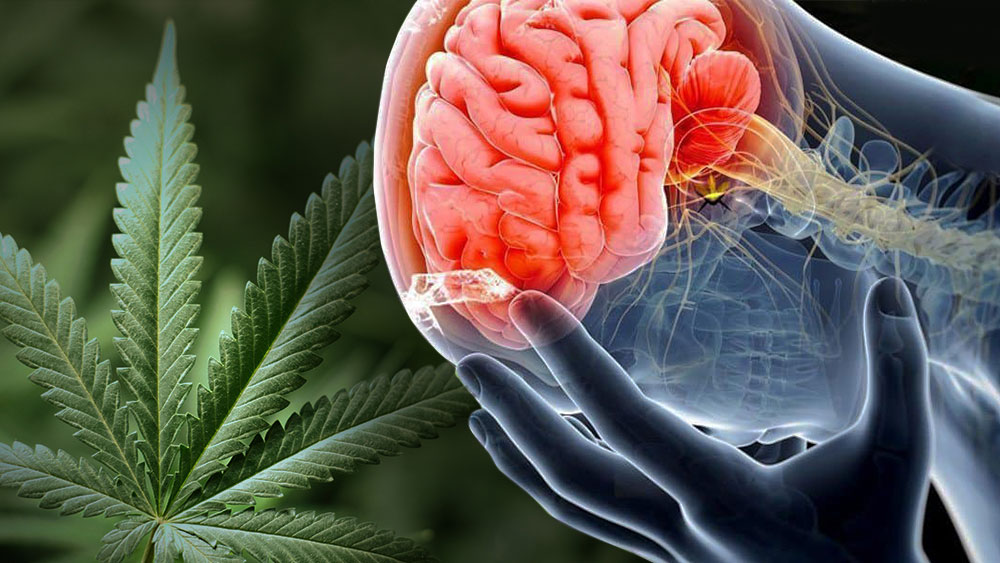
Smoking — of things such as joints, pipes, water pipes (“bongs”), and vaporizers — is the best-known way to use Marijuana.
Its effects begin after just a few minutes, making this ideal for immediately addressing a Migraine episode. Aside from pain, it directly addresses other symptoms that might accompany the headache, such as Anxiety and Nausea.
Smoked marijuana’s effects peak within 30 minutes and last two to four hours, depending on potency and individual tolerance.
Smoking CBD for Migraine: Cons
Unfortunately, there are drawbacks. Smoking dry herb involves combustion. Although the smoke from Cannabis is not as toxic as tobacco, it can lead to issues like chronic bronchitis or lung inflammation.
The only exception is vaporization. Rather than light the herb on fire, a vaporizer heats the Cannabis in a small chamber, boiling the compounds into a vapor. Not only does this preserve more of the cannabinoids and terpenes, but it also lessens the issue of toxins or irritants associated with smoke — to a certain extent.
Keep in mind, even when vaping, there are risks. For instance, vaping cannabis at a higher temperature than 401°F (205°C) releases benzyne, a known carcinogen.
Cannabis smoke and vapor also can cause coughing. The violent jerking motions from a cough may make a headache or Migraine attack worse — at least until the THC takes effect.
Ingesting CBD for Headaches & Migraine: Pros
There are plenty of ingestible cannabis options, like oils, tinctures, baked goods, gummies, chocolates, and drinks — to name just a few.
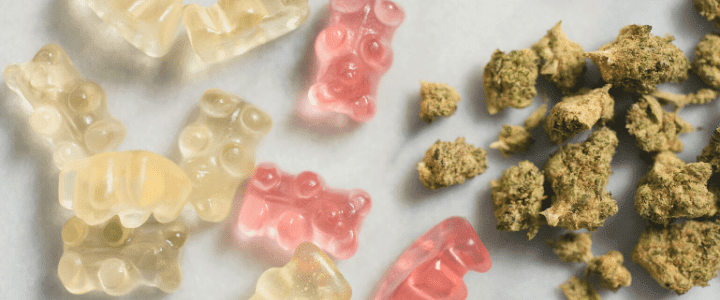
Unlike smoking, CBD reaches the bloodstream through the digestive tract, making it less harmful to overall health. The effects also last longer — up to 12 hours in some cases — with the high peaking between two to four hours.
Ingesting CBD for Migraine: Cons
However, edibles need to be processed by the body first, so onset takes an average of 30 to 90 minutes, sometimes more. Consequently, edibles are impractical for immediate Migraine relief but are excellent for regular preventative dosing.
Another problem is that it is a lot easier to overdose or “green out” when using edibles. Many beginners expect to feel the effects quickly, causing them to ingest more. If you are using THC/CBD taking in more THC than needed can lead to symptoms like anxiety, nausea, vomiting, dizziness, and even hallucinations.
When using edible marijuana for Migraine, remember the rule of “start low and go slow.” Begin with a low dose (2 to 5 mg) and gradually increase every 90 minutes as needed.
Cannabis Strains Have Different Effects
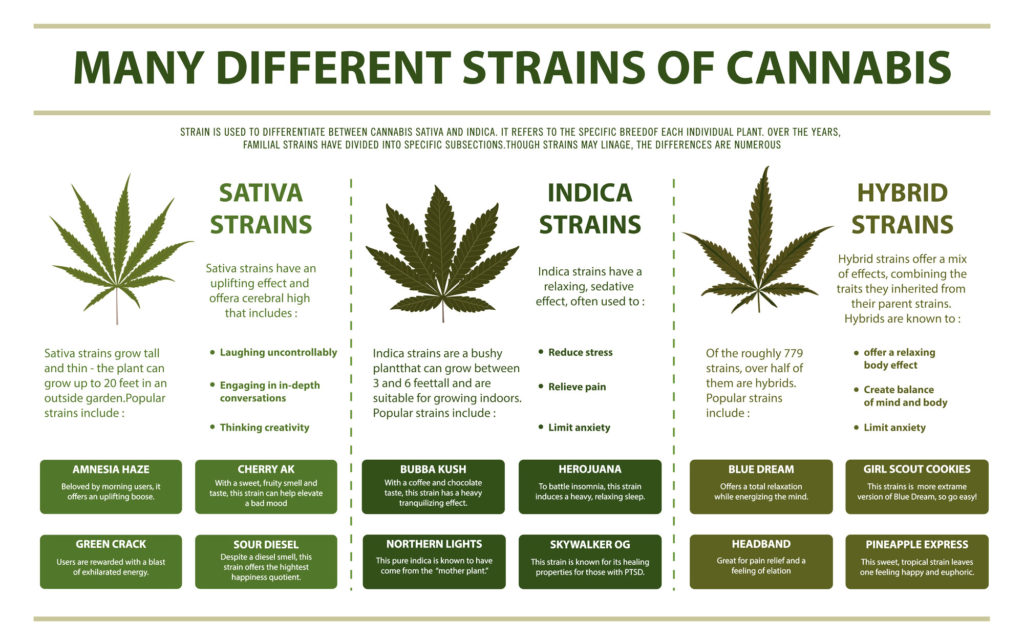
There are thousands of Marijuana strains, each with their associated good and adverse effects. Although some were involved in studies, most information about their benefits comes from anecdotes.
However, one study examining self-treatment with marijuana in Migraine patients found over 40 commonly-preferred chemotypes (cannabis varieties). “OG Shark” — a high-THC hybrid strain with unknown origins — was the best-liked, mainly due to its excellent ability to handle symptoms like nausea and chronic pain.
Also on the list were other famous strains, like Afghani, Alien OG, Cannatonic (high CBD), Bubba Kush, Jack Herer, OG Kush, Purple Kush, Rockstar, Skywalker OG, Warlock CBD, and White Widow.
CBD vs. THC
Most of the 40 strains were primarily THC, which typically sit in the 15-25% potency range. But some, like Cannatonic, contain virtually no THC and high CBD. Others fell into a more balanced THC-to-CBD ratio.
Researchers in the study, as mentioned above, found that Migraine Patients who took 200 mg of oral Cannabis containing 0.4% THC and 9% CBD experienced a 55% drop in pain severity when consumed during an attack. Patients who used that same dose daily experienced 40.4% fewer headaches as compared to the 40.1% reduction seen with amitriptyline.
This is good news since CBD is non-intoxicating. A THC level of 0.4% at 200 mg may still cause impairment in rare cases, such as among THC-sensitive individuals. But any psychotropic effects fade as individuals become used to the cannabinoid.
Also, keep in mind that the side effects of opioids or prescription Migraine drugs can also cause drowsiness, dizziness, and other symptoms similar to the effects of THC Marijuana — often to a higher degree.
Side Effects
All medications have side effects, and marijuana is no exception. A single study found CBD worked well as the primary therapeutic cannabinoid. However, most seem to prefer high-THC strains — which dominate the list above.
THC does have a long history as an analgesic, but it’s also well-known for many effects that severely limit a patient’s ability to function. Some of these include:
- Impaired motor/cognitive skills
- Drowsiness
- Paranoia
- Anxiety
- Rapid heart rate
- Dizziness
Consequently, people with Migraine can’t use THC and still perform daily tasks, like driving or working. It puts them in the same position as an untreated Migraine attack. The only difference is symptom relief (when used correctly).
CBD, on the other hand, has fewer side effects, including:
- Drowsiness
- Light-headedness
- Low blood pressure
- Nausea
- Diarrhea
- Irritability
Liver damage is also a concern, which we’ll touch on shortly.
The real problem isn’t necessarily CBD’s potential side effects but rather the source. It’s always safer to get CBD from a licensed marijuana producer. Unfortunately, not all states offer this option. Thanks to the new federal legalization of industrial hemp, CBD oil supplements are now legal in all 50 states (infused edibles and other CBD products are technically still illegal).
The supplement industry is unregulated, and therefore it can be challenging to find a reputable supplier. Always strive to get CBD from a licensed producer and legal retailer. Here at Thailand hemp Farms we know where to acquire Quality CBD.
Cannabis Can Affect Some Health Conditions
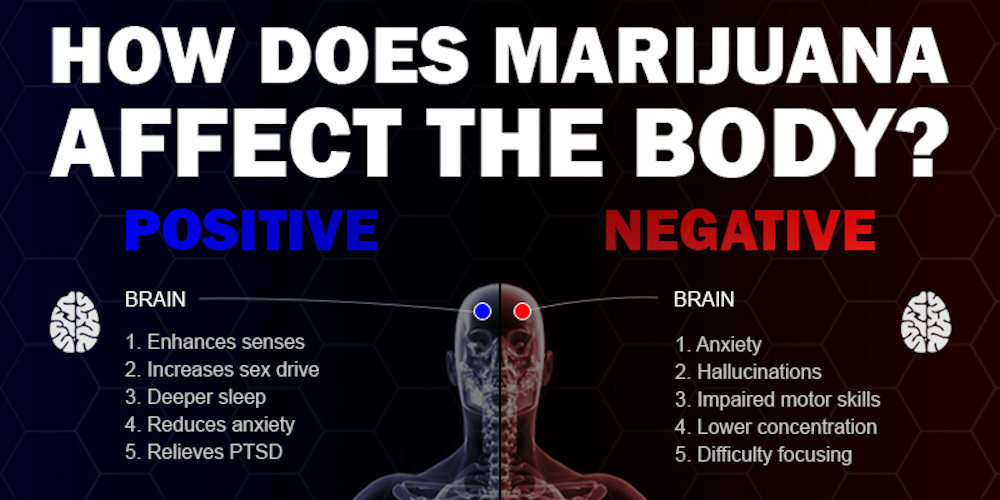
Before trying marijuana for Migraine, it’s important to discuss any existing health conditions with your doctor. Not all medical situations conflict with THC or CBD, but it’s essential to know which ones do.
Anxiety
If you suffer from anxiety, you need to find a delicate balance when using cannabis.
According to a report by the Alcohol and Drug Abuse Institute,[5] studies on anxiety patients found low doses of THC (7.5mg) eased anxiety while “high” doses (12.5mg) made it worse (4).
CBD had no adverse effects at any dose. If you have anxiety, your best bet is to use a strain with more CBD and a THC level of under 10%.
Pulmonary Issues
While there’s no evidence that smoking marijuana causes cancer, COPD, emphysema, or any other tobacco-related illnesses, smoking cannabis can still be a problem for people with these conditions.
If you have any lung issues, avoid smoking, and stick to either vaporization (for quick relief), topicals, or edibles.
CBD Can Impact Prescription Medication

In recent years, there has been a lot of chatter about hemp-based CBD supplements, which are federally legal (although some states place restrictions).
However, high-CBD “marijuana” (cannabis with over 0.3% THC) is available when permitted by law.
But CBD is CBD, whether you get it from a dispensary or a hemp extract vendor. The real concern is how it may interact with some medications.
During the groundbreaking epilepsy study on CBD, researchers found a disturbing interaction between the CYP450 family of liver enzymes and various subjects’ medications.
CBD relies on CYP3A4 — a member of the P450 group — for liver metabolism. But during the process, it can interfere with the breakdown of medications that also interact with CYP3A4.
The problem is that some antiepileptic drugs, like valproate (valproic acid), are also used in Migraine prevention. Gepants are also metabolized by CYP3A4 so patients taking Nurtec ODT or Ubrelvy would need to discuss it with their doctor prior to using CBD. Anti-CGRP monoclonal antibodies, these however, are not metabolized by the liver.
Any medication simultaneously sharing CYP450 enzymes with CBD can lead to at least one of the following complications:
- The medication inhibits CBD processing, reducing its effectiveness.
- CBD alters the metabolism process, slowing down the processing of the prescription medication in question. Medication levels in the blood remain too high, leading to potentially dangerous side effects.
- CBD increases medication metabolism rates, processing them too quickly and reducing their effectiveness.
Different Strains Have Different Effects
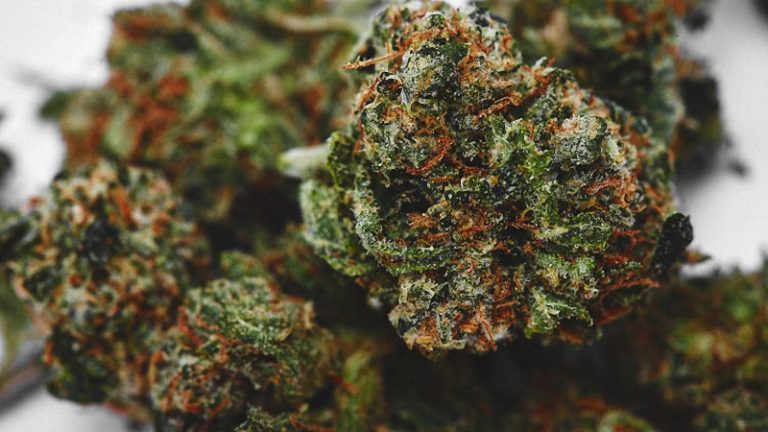
Although lumped into indica and sativa categories, we now know that those classifications have nothing to do with a strain’s effects. THC and CBD certainly play a prominent role, but it’s terpenes work behind the scenes to narrow down a chemovar’s (strain’s) effects.
Unfortunately, there hasn’t been much research into terpenes and their relation to Migraine. But one study found two prominent terpenes – myrcene and caryophyllene – were helpful in headache pain reduction.
The Take-Away
Although research into medical cannabis is increasing, there is still a lot that we do not know. Even so, many people use marijuana for Migraine relief and there is some science backing it up.
As with any new treatment, it is up to you to weigh the costs and benefits, discuss with your healthcare provider, and ultimately make the best decision for you and your Migraine.
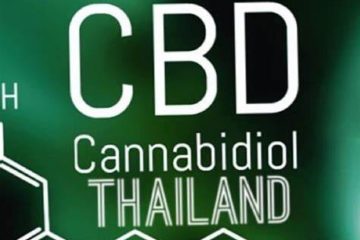


0 Comments